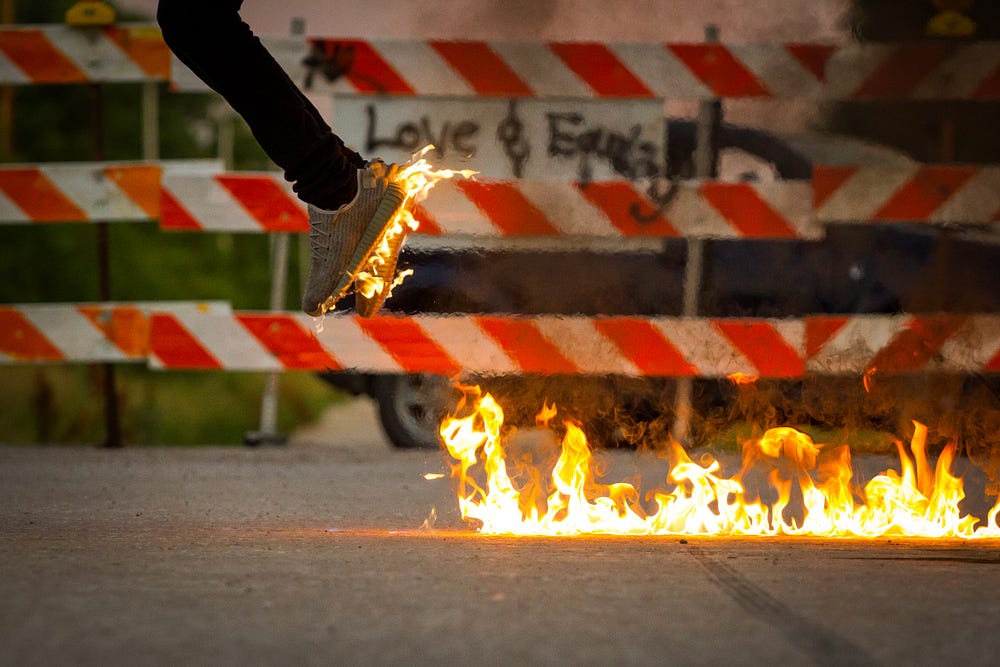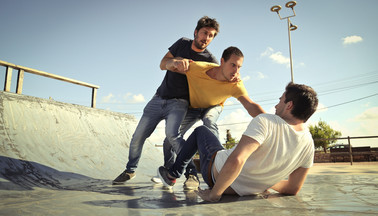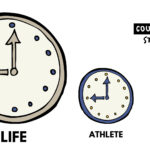NOTE: I originally wrote this article a couple of years ago, but I thought I’d revamp it because it seems like it needs some revisiting and elaboration.
* * *
So I recently had a rather unexpected encounter. I witnessed something that has, regrettably, become a norm in our society.
If you’ve ever heard words the “Worldstar!” uttered behind in a shaky cell phone video, or if you’ve spent an afternoon scouring the deep depths of YouTube — you most likely know what I saw. Heck, if you checked your Facebook feed in this past week, you probably know exactly what I’m talking about.
Last month I witnessed a good old classic “parking lot brawl”
Table of Contents
How did it start?
Well, it was just a few days after Christmas. Somewhere in that strange time frame between Christmas Day and New Years — y’know, where you’re maybe thinking about being a better person, but at the same time the new year hasn’t quite come around, so instead you’d rather just go shopping and bask in the self-pity.
Well, we had finished shopping and I was just pulling the car around to pick up my wife and my mother-in-law. Her mom had recently snapped up her ankle so I told her to just wait at the entrance and I’d come to pick her them up.
On my way over I saw something to my left that caught my attention.
A man, probably mid 40’s, appeared to be shoving and pushing a woman!
To be honest my first instinct was rather naive. I actually thought it two friends sort of joking around and “play fighting”. What can I say, I like to assume the best of people. I’m an optimist.
But as I’m driving past it dawns on me, “Oh crap! This is a real fight”. I also realized this it wasn’t a woman, but some dude with really shaggy hair and curvy figure.
It was at this very moment that I had to make a choice.
- Would I simply drive by and let them sort it out?
- Would I stop, pull out my phone and film?
- Or would I take action?
A Brief Story of In-Action
In 1964 a story broke out that shook many people and caused them to question their very own faith in humanity.
In the dark streets of Queens, Kitty Genovese was chased by her assailant. She was attacked three separate times, in a 30-minute window. When the dust settled, the most disturbing fact was revealed. During that grueling half hour window, 38 of the surrounding neighbours claimed to have witnessed the murder. However, not a single one did anything, let alone even call the police.

People who heard about this story harshly criticized the cold and heartless neighbours. Many even blaming urban life as the culprit. Stating that it’s causing people to be cold and dehumanizing.
Ultimately the reason for this shocking outcome does have a somewhat simple explanation. It largely has to do with something known as the Bystander Effect. A social psychology term that refers to cases in which individuals do not offer any means of help to a victim when other people are present. The exact reason for his reaction has many different explanations: ambiguity, cohesiveness, and diffusion of responsibility.
It’s a difficult concept to understand, but if we are being honest, we’ve all had situations in which chose to simply watch, instead of intervening.
When I first heard this story, I was shocked and heart was broken by it. This woman’s life could have been saved multiple times, by dozens of individuals.
But it wasn’t…
All it would have taken was one person to break the chain of inaction.
But they didn’t.
…back to the brawl
And so, there was…
just driving on by…
with this story playing in the back of my mind…
What do you think I did?

I took action!
Without even a moment of hesitation, I ripped the car around the corner. Threw it into park. Leaped out. Sprinted towards the two men. And split them up.
Looking back I don’t even recall what my plan of action was. I didn’t know which guy to push back or who even started the whole thing. I didn’t know if they would keep fighting or want to fight me instead.
I just did it.
I had never really done anything like that before, but in the heat of it all, that didn’t even cross my mind.
All I knew what this:
- I didn’t want to become just another statistic.
- I didn’t want to be just another bystander.
- I didn’t do it for me.
- I didn’t do it for glory.
- I didn’t do it for the fun story I could tell later.
Instead…
- I did it because of what I value.
- I did it because I believe violence is the last resort.
- I did it because deep down I knew I could help.
And you know what happened?
Other people who were “standing by”, stepped in. They helped me break it up and kept the two men apart.
They knew what they were witnessing was wrong, but they were looking to someone else to be a leader.
How to make the right choices
We make choices every day. Some good, some bad. Most of them insignificant.
But every once in a while, we get moments like this. Where in a split second we have to choose sides. And sometimes, there are more people on the wrong side.
The question you need to ask yourself is this:
When the dust settles, will you feel good about your choice, or will you live with regret?

However, the problem for many people is they are unsure of who they are at the core. In other words, they don’t know or understand their personal values. Their self-concept (i.e, the person they want to become) is foggy and in moments when “emotions” are strong and the mind is weak, we make choices that do not align with our ideal self-concept.
The thing is, everyone is good at giving themselves labels. When someone asks “who are you?”, we respond with a canned answer like, “I am…”
- an Athlete,
- a Winner,
- a Teacher,
- a Student,
- or an Entrepreneur.
But none of those really describes or defines you as an individual. A title is only a mental shortcut you use to avoid
So what should you do instead?
Step 1: Define your self-concept
Your self-concept is all about the person you are trying to become. Rather than fixating on specific goals, first figure out who you even enjoy being. Look back at the past and think about times in your life where you’ve been proud, joyful, and excited to be alive.
- How would you describe that person?
- What sort of character were they showing?
- How were they acting at that moment?
- What traits make them admirable?
Once you got that self-concept nailed down, move onto step 2.
Step 2: Name your personal values
Personal values are somewhat of a vague concept that get’s thrown around a lot in the self-help realm. So for the sake of simplicity, I will boil it down this:
Values are what we find most important in our lives.
For some, it’s family. For others, it’s travel. And for many, we can be dragged along by other values like money, success, or status. The issue that many of us face is when we naively choose “bad values” over “good values”.
Now, I’m not going to sit on my pedestal and proclaim what is a good or bad value. Rather, I am going to lean on one of my favourite authors Mark Marson, who shares his take on values both in his book SANGF and in this great article.
Good values are:
- Evidence-based
- Constructive
- Controllable
Bad values are:
- Emotion-based
- Destructive
- Uncontrollable
If you would like to learn more about the how of developing personal values, I would highly recommend you read the full article by Mark.
These three characteristics are ideal filters through which you can create your personal values. As you come up with them consider the 3 choices between good and bad:
- Are they based on the truth or your feelings?
- Do they build others up or break them down?
- Are they something you can control or entirely driven by chance?
Once you establish these two steps, navigating the challenging moments of life, become far more manageable. If you see yourself becoming a strong leader and value working with others that doesn’t mean you have to always be leading a team or a company. A leader is someone who shows themselves in small moments. They are someone who makes the right choice despite the wrong actions of those around them (i.e, in a parking lot fight).
But if you don’t even know what you stand for, you will fall for everything around you.
So choose wisely. Choose the type of person you want to be ahead of time so that when the sh*t hits the fan, you don’t have to second guess. You just act.

Athlete Application:
I think the lesson here has a lot to do with our emotional reactions when competing. Whether it’s the ref making a bad call, or your teammate making a mistake— we can choose whether or not our reaction is good or bad. Deep down we know that kicking and screaming is no way to get ourselves heard. It never accomplishes anything positive. The only this it does is create more negativity. Yet we still do it anyways. We see all of the fans, coaches and our teammates yelling at the ref so we feel like it’s okay for us to do the exact same thing.
It’s at this moment we can actively choose to break the chain of action by choosing a positive action instead. Everyone else realizes that yelling at the ref really accomplishes nothing in the long run. And they will most likely regret it in a few minutes or after the game.
Rather, you need to practice controlling our immediate responses in the heat of the moment. Focus on what is going to lead to personal growth and moving you towards your ideal self-concept. If you have the clarity to not react, remind your teammates to show the same level of sympathy. Use your emotions constructively and work together as a team.
-Derek





